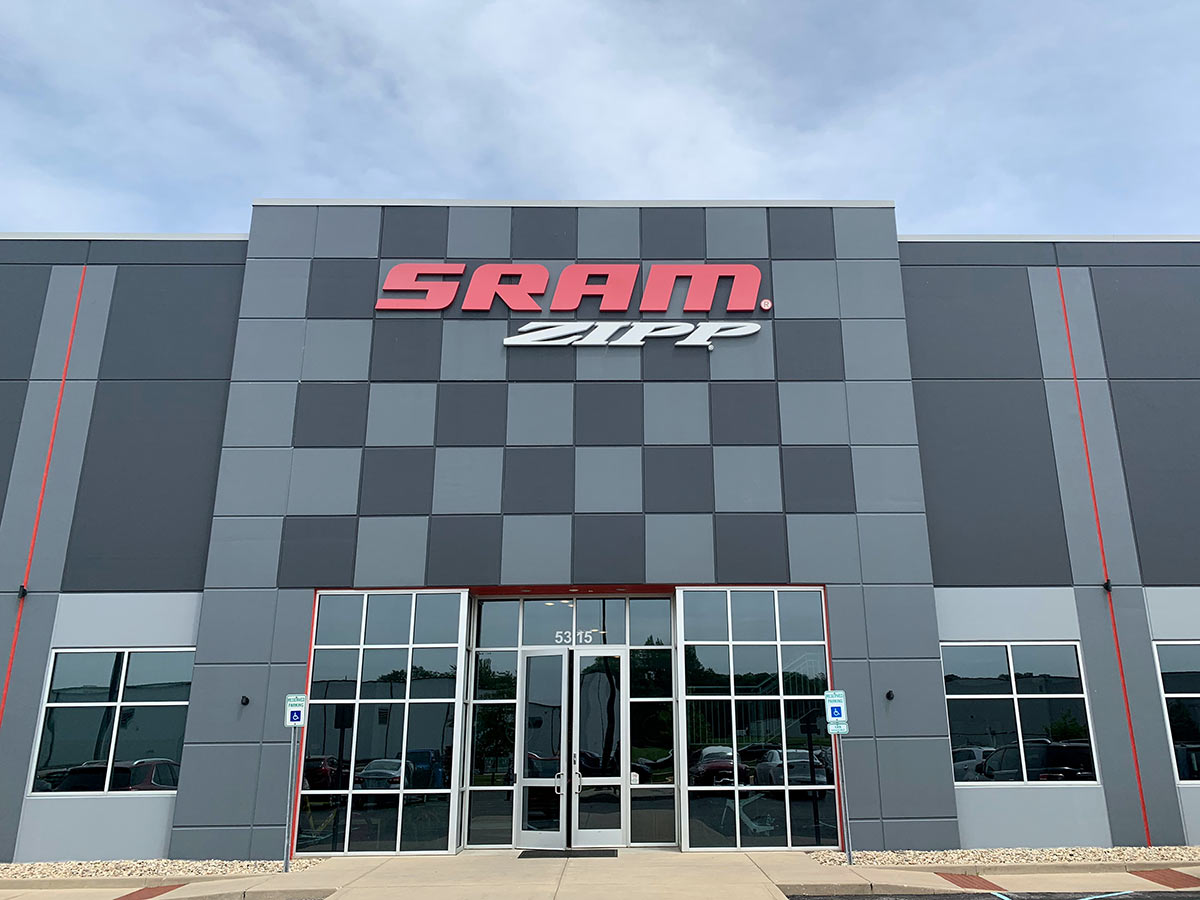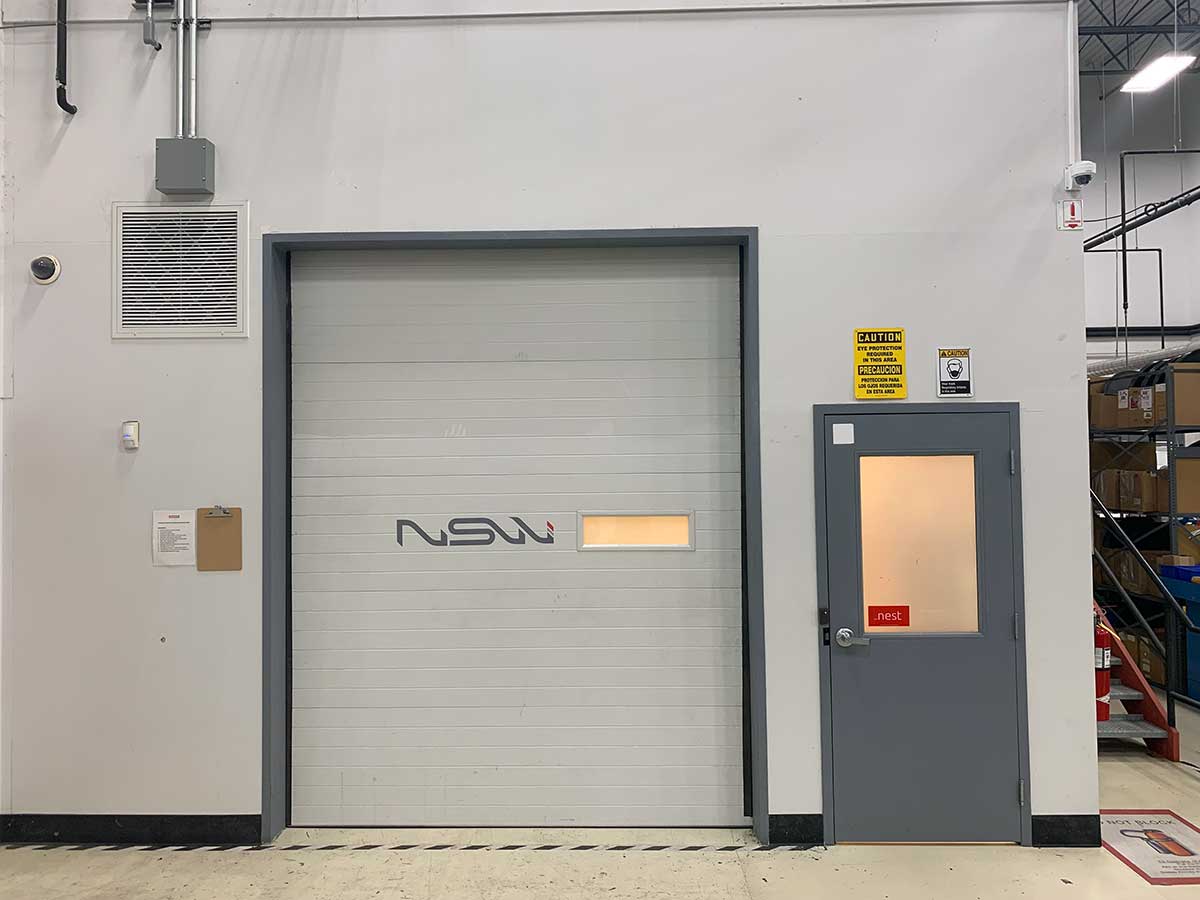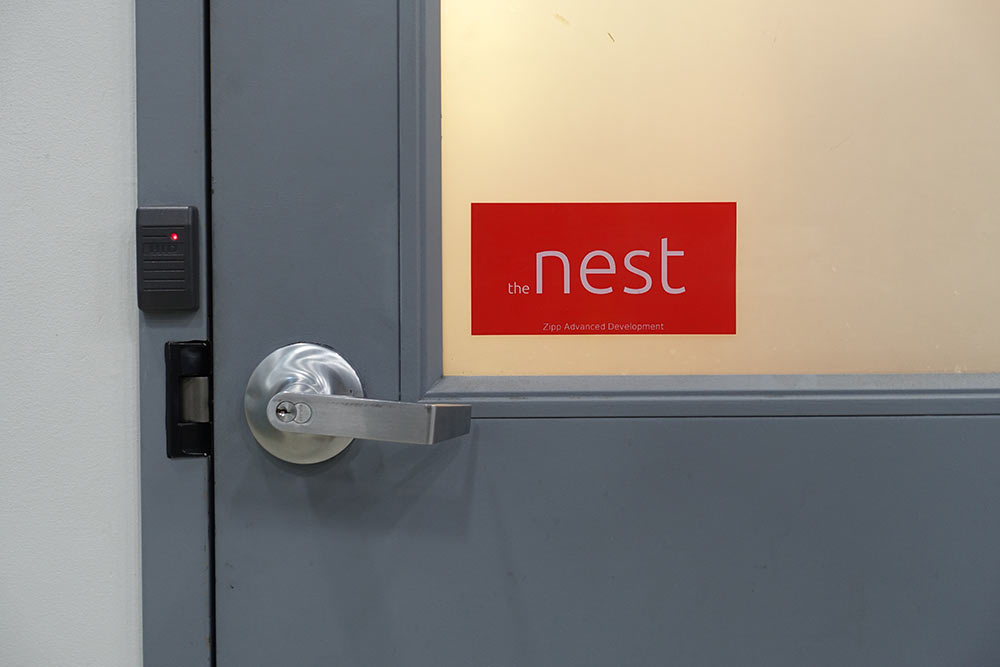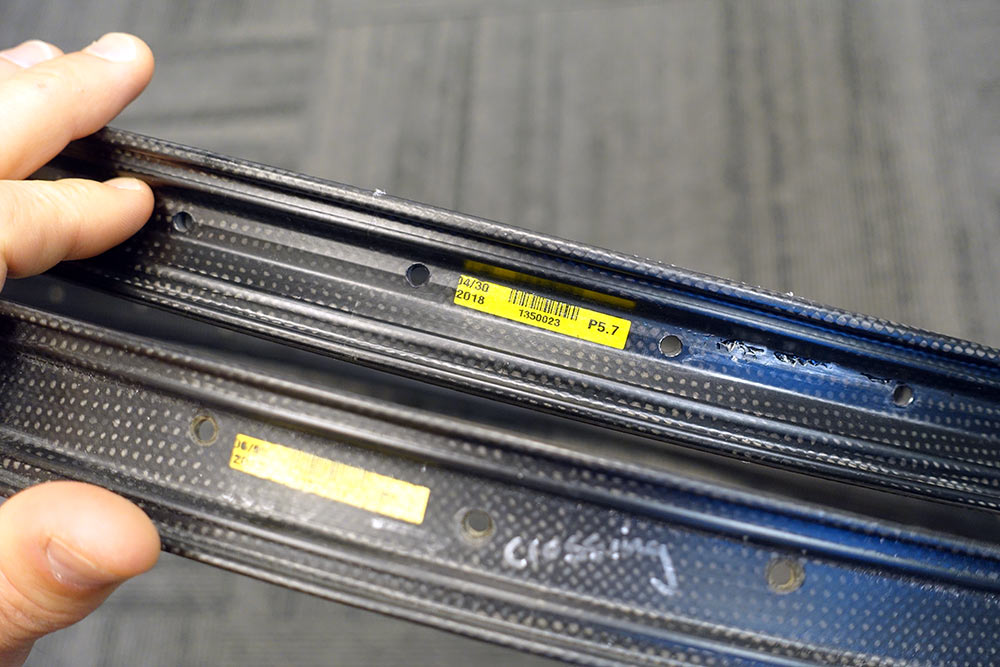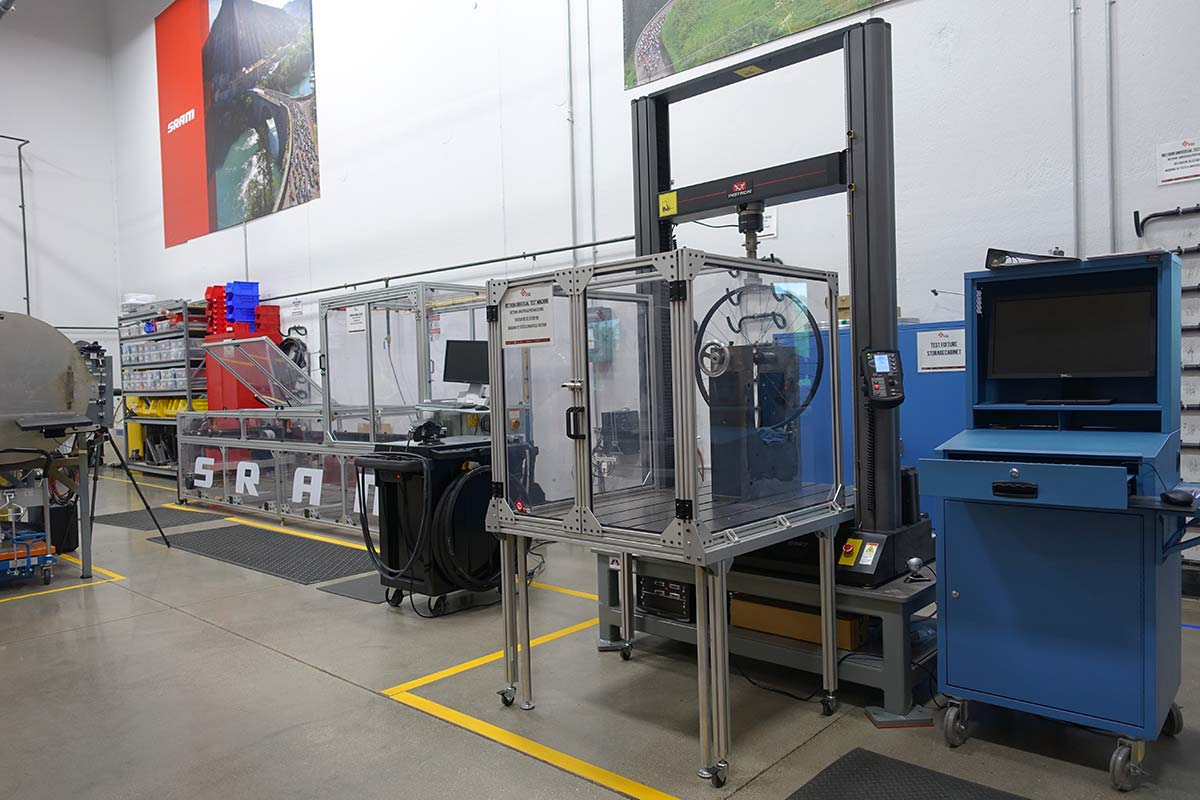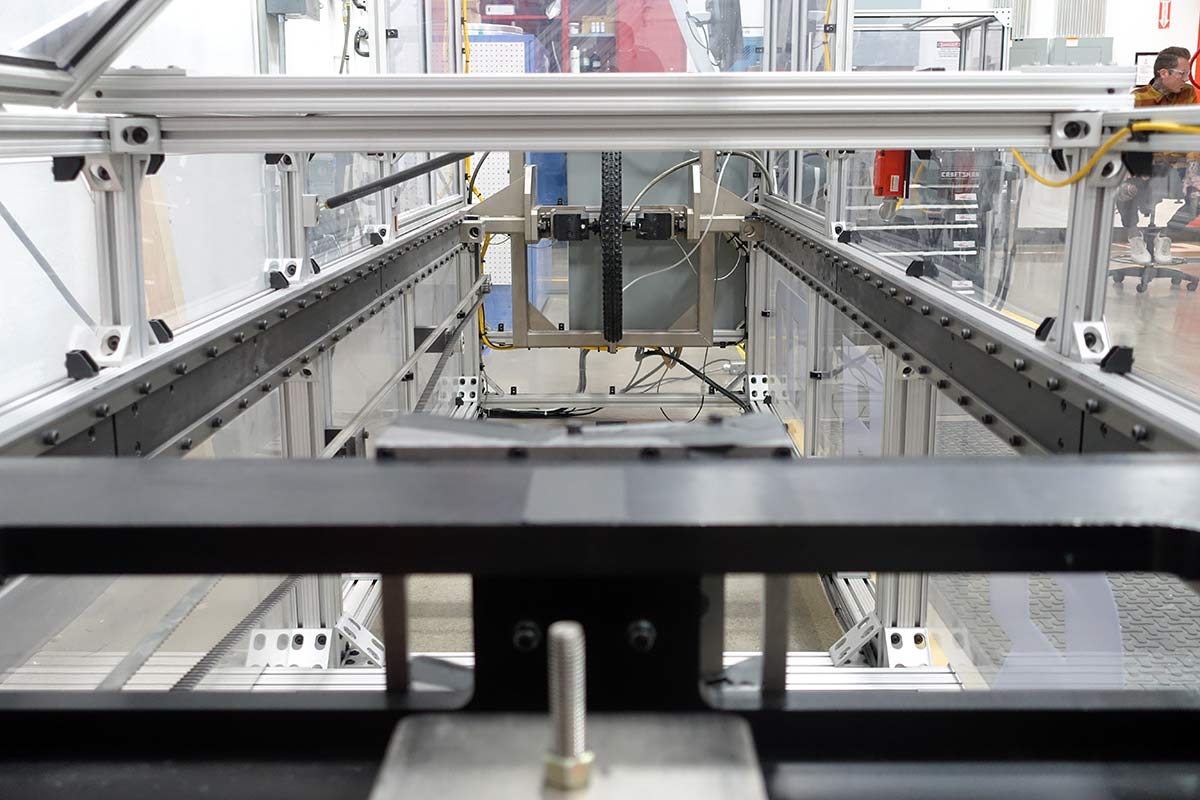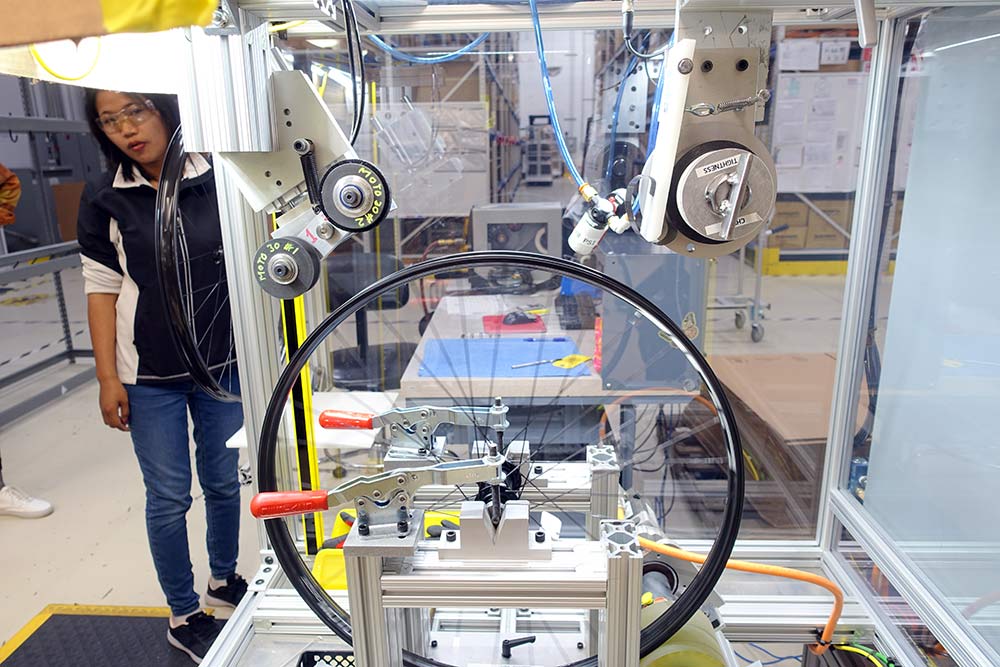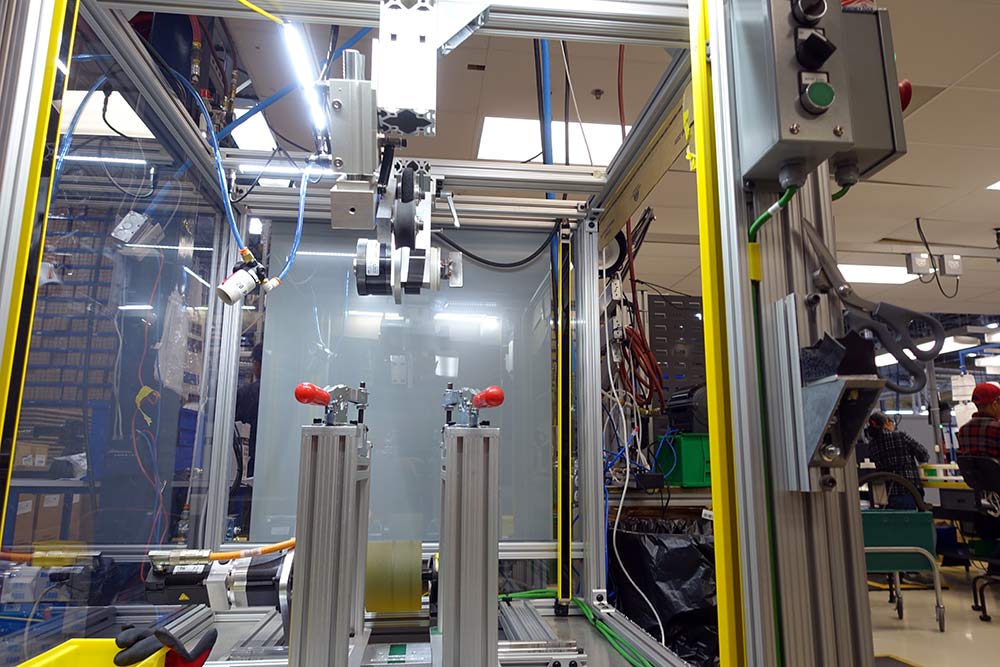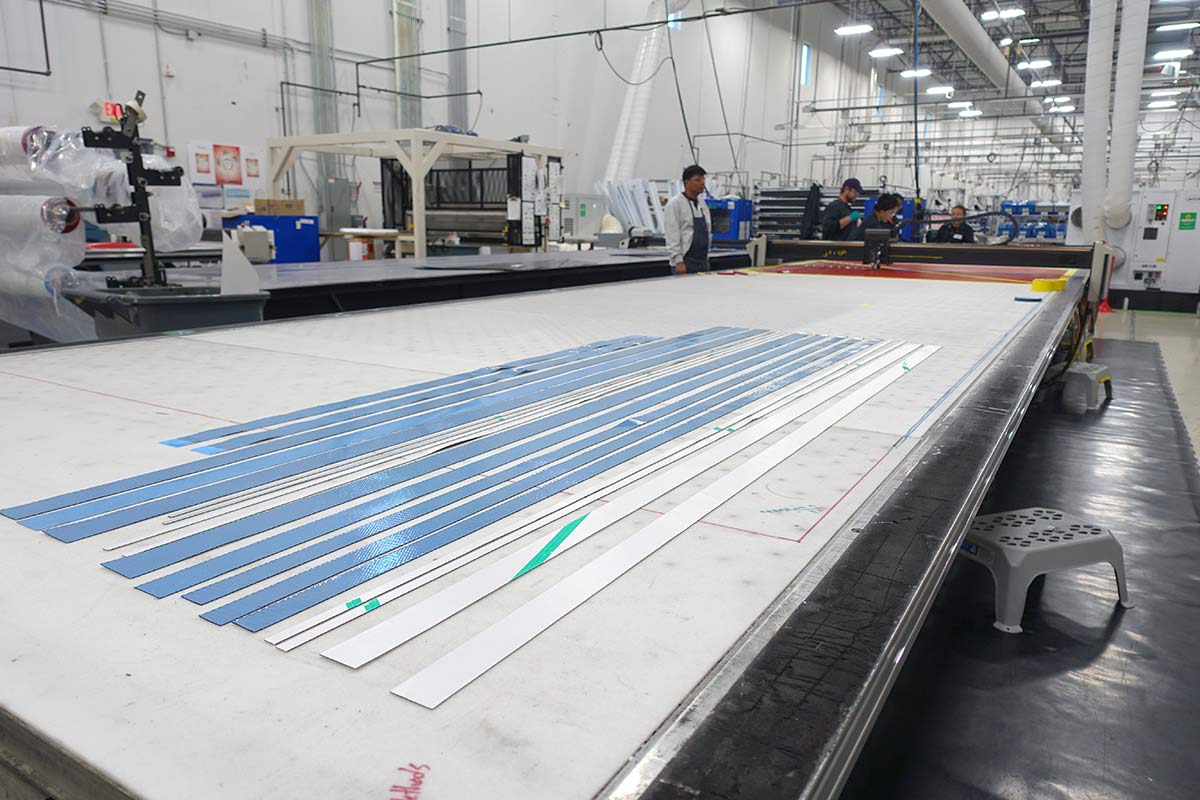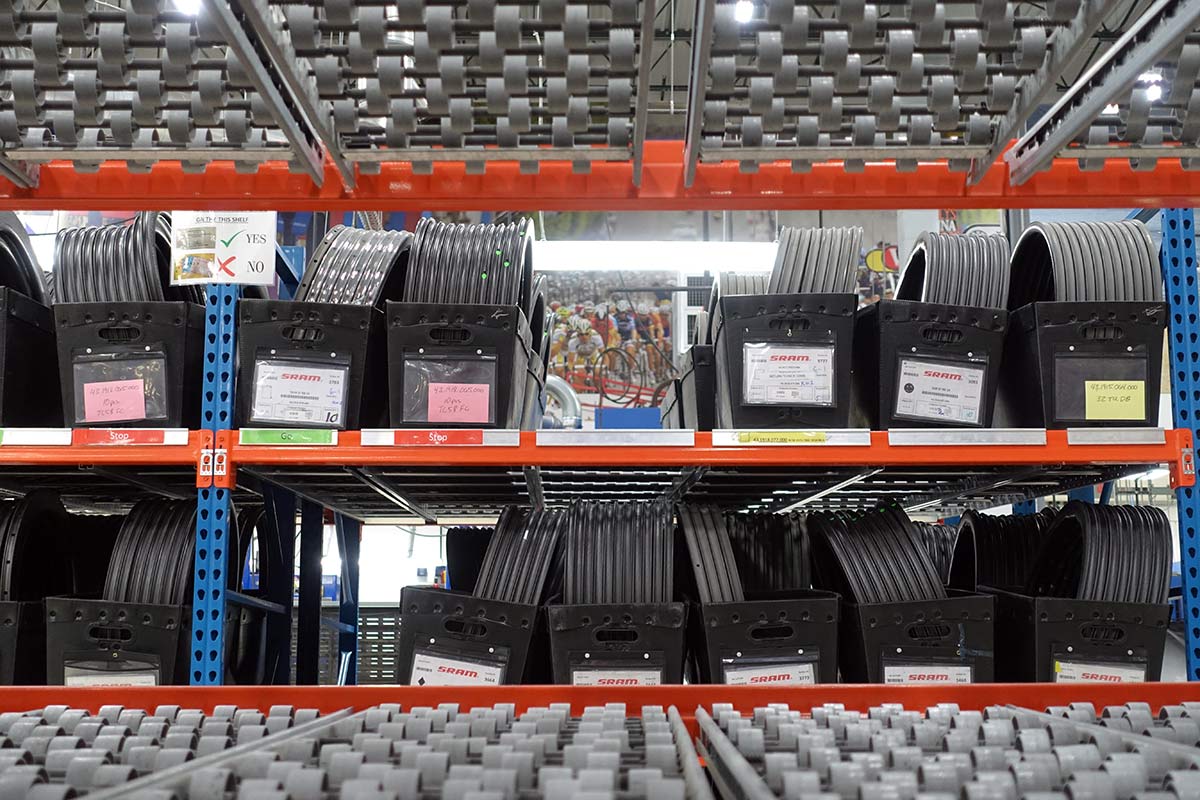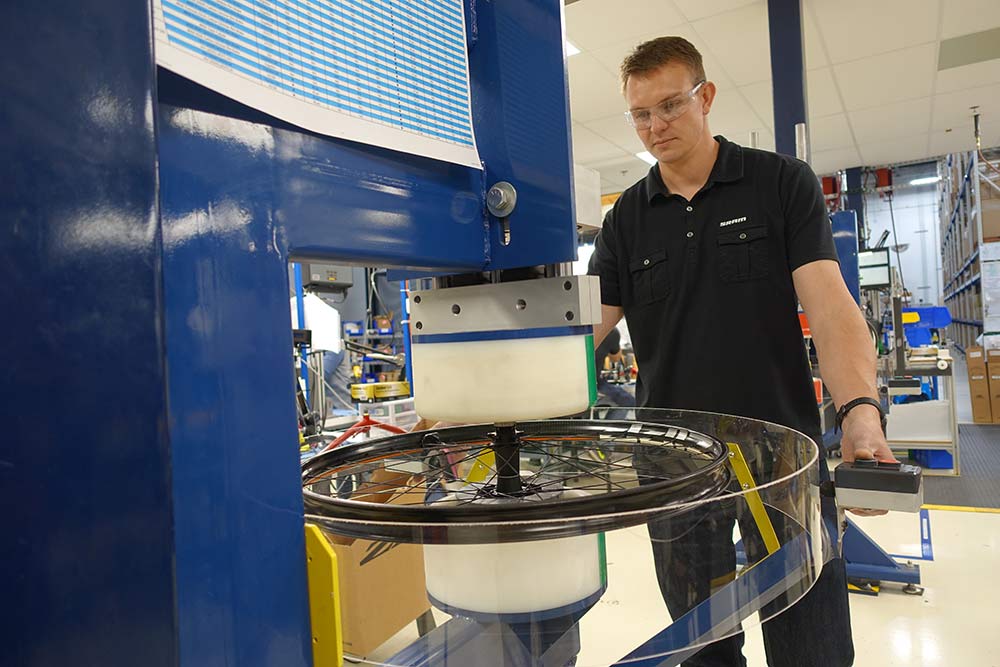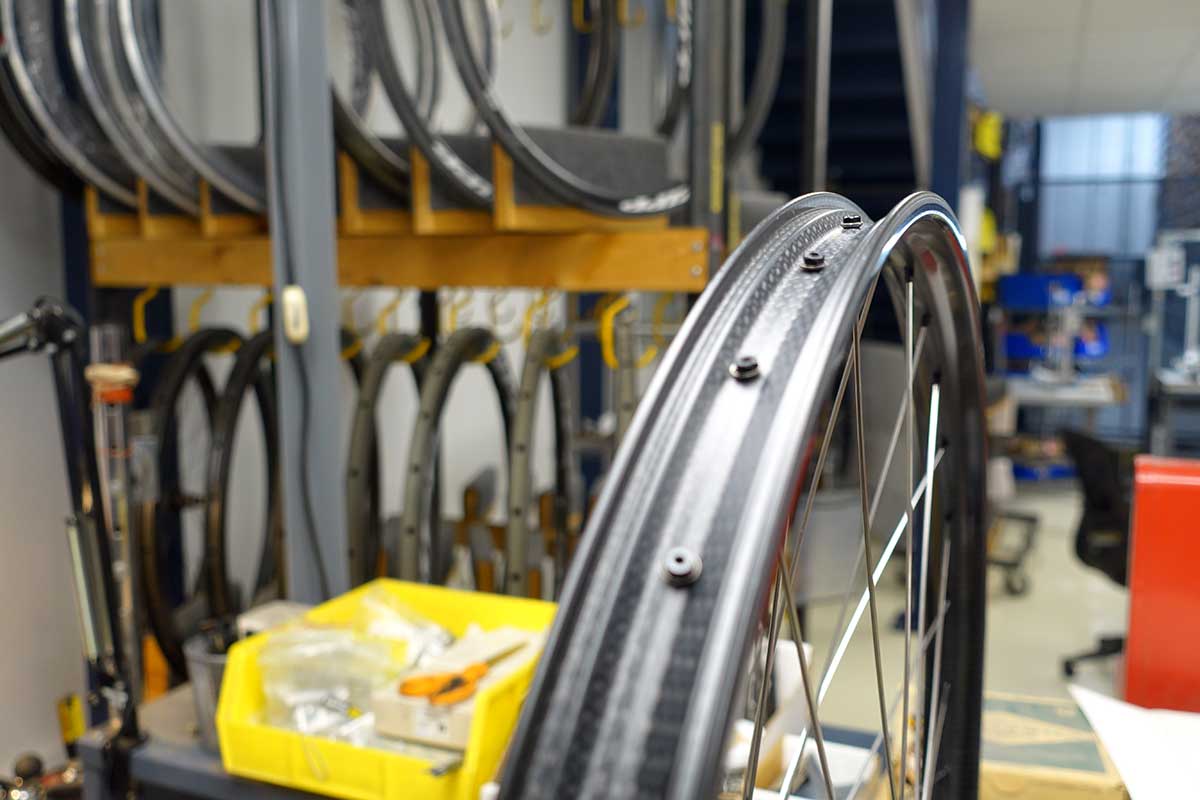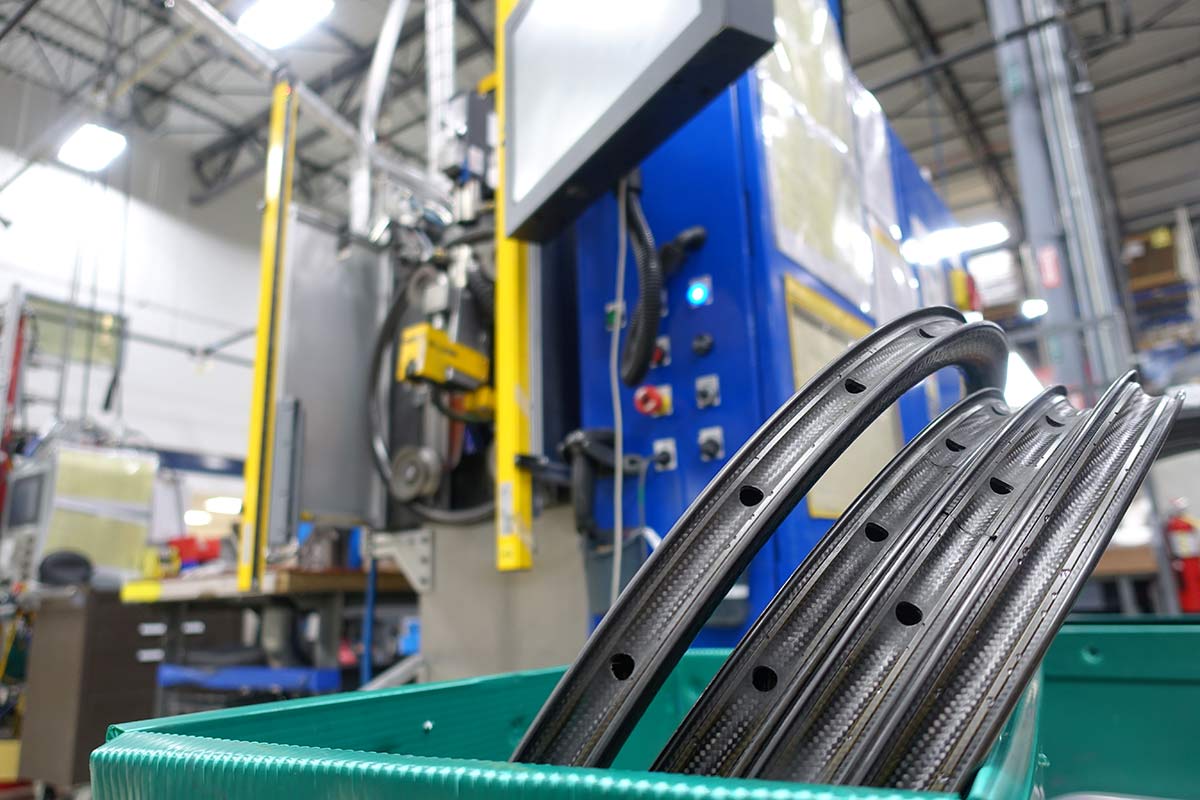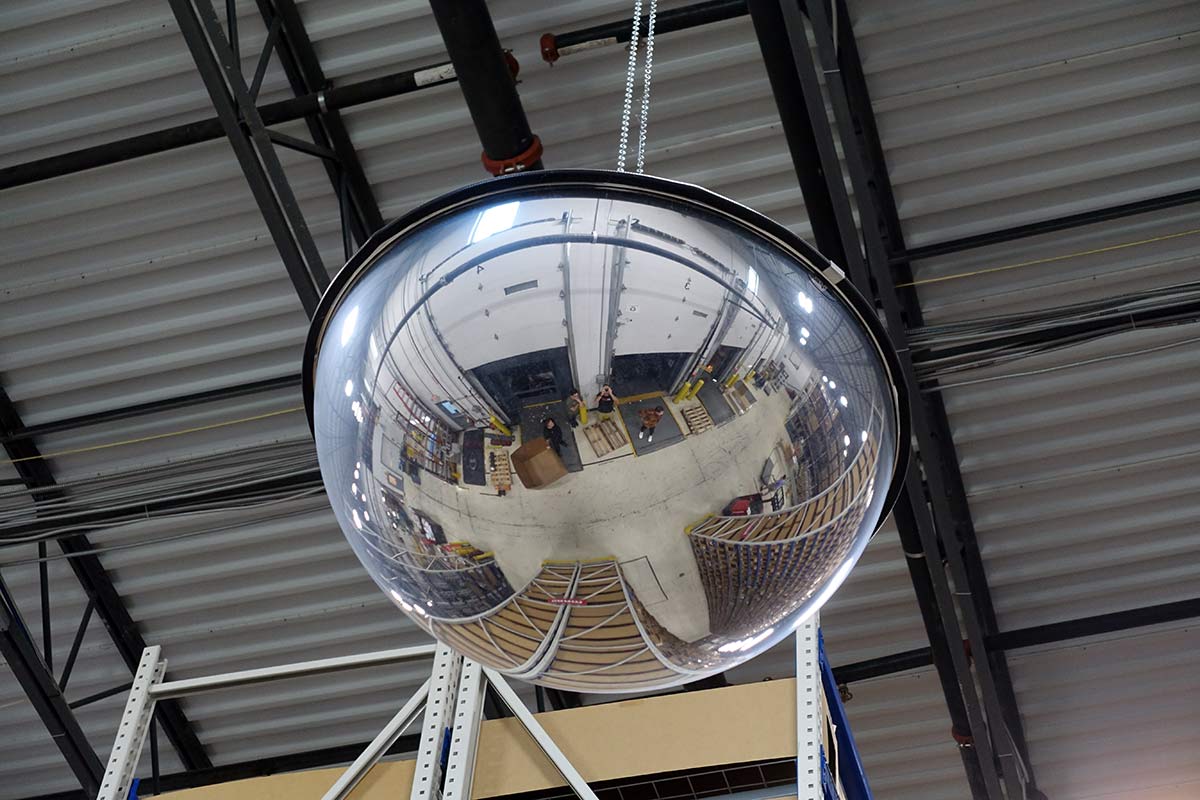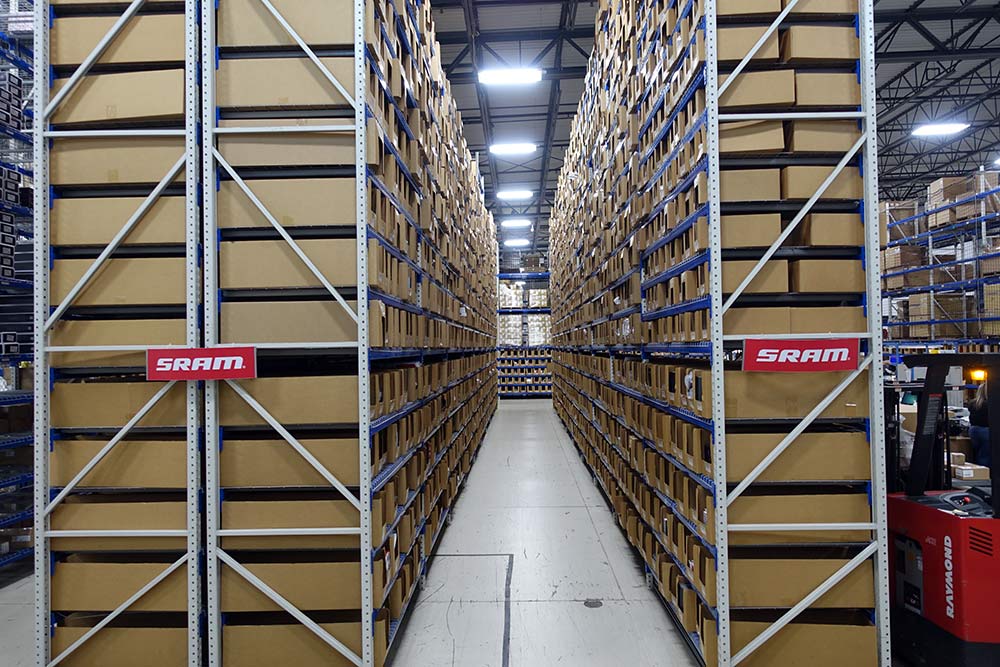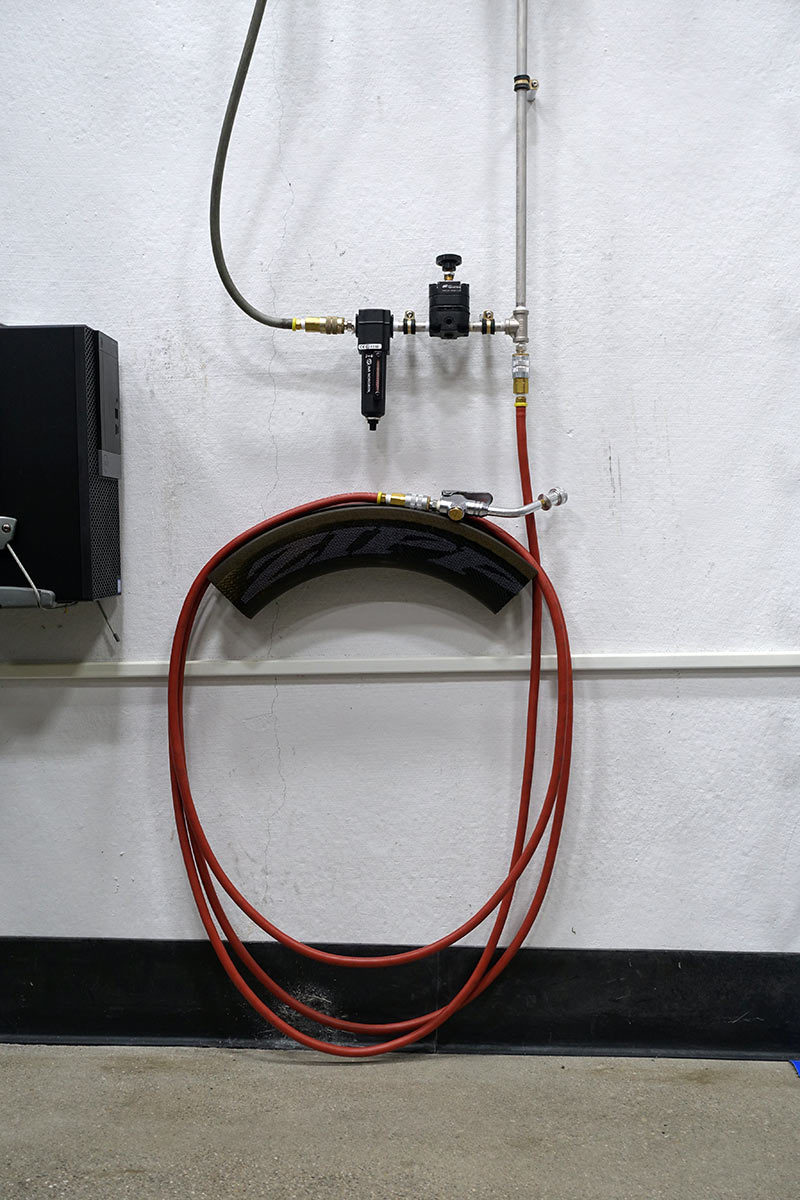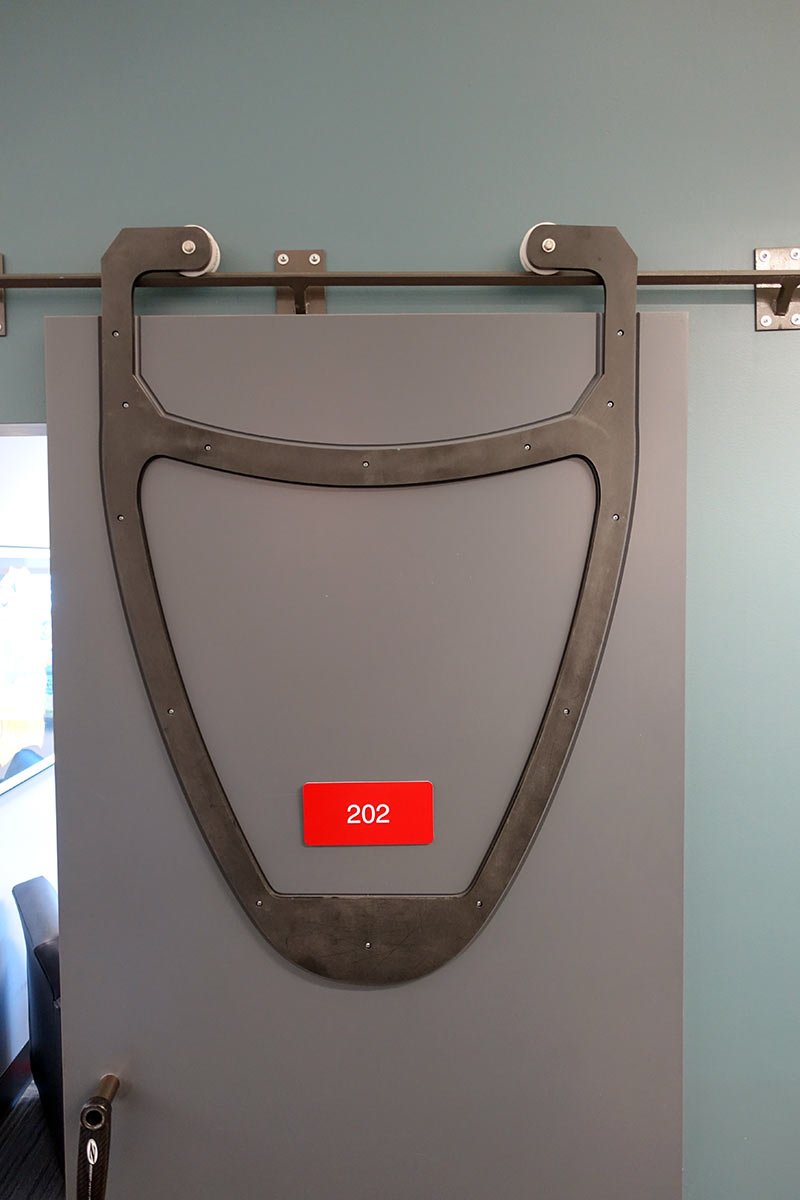“We like to solve problems. Whether it’s drag or pinch flats or anything else that slows a rider down, we like to figure out how to solve them so riders can go faster. To do that right, you can’t just go to China and pick those things out of a catalog. We had to really start from scratch and develop these things ourselves. We design these things in Indy, prototype them here, and test them here. Being able to iterate like that, having new versions in a matter of days or even hours, is crucial. We can see the results in real time and make rapid changes. That gives us a huge technological advantage and advantages in efficiency, and strategic advantages in keeping our technology safe from copycats.
“What we love to do is learn. And the way to do that is to see what’s actually happening. Having all of this here in Indy lets us make a better product because we can learn from the process, too, not just the testing.
“And then we make it here in Indy, too.”
Such was our introduction to the ethos of Zipp. After bearing witness to the performance benefits introduced by Zipp’s 3Zero Moto mountain bike wheels at their launch, we wanted to see how they were made. So, we paid a visit to their headquarters in Indianapolis, IN. Why Indy? Well, it’s where they started, long before SRAM acquired them, because there’s a wealth of motorsports industry (read: knowledge) there to draw from, and that’s where founder Leigh Sargent found himself wanting to apply that expertise to bicycles in 1988. Fast forward to 2007 and SRAM scoops them up, then skip ahead to 2019 and we have their first proper mountain bike wheelset. We covered the tech details and first impressions here, and spoke with Jerome Clementz about his role in testing and development here. For this story, we’ll focus on how those rims make their way from sheets of carbon to a complete wheel, with a look at other parts of their factory, too…
Gotta fly before you can ride
Zipp’s top secret development team works in the NEST. Tucked in the back corner of the building, all hell could be breaking loose in the rest of the building and they wouldn’t know. It’s completely self contained, with no windows and a security card-activated door.
This is where the 3Zero Moto mountain bike wheels first started life, but once it got to the point of rideable prototypes, they had to see the light of day and start…
Testing, Testing
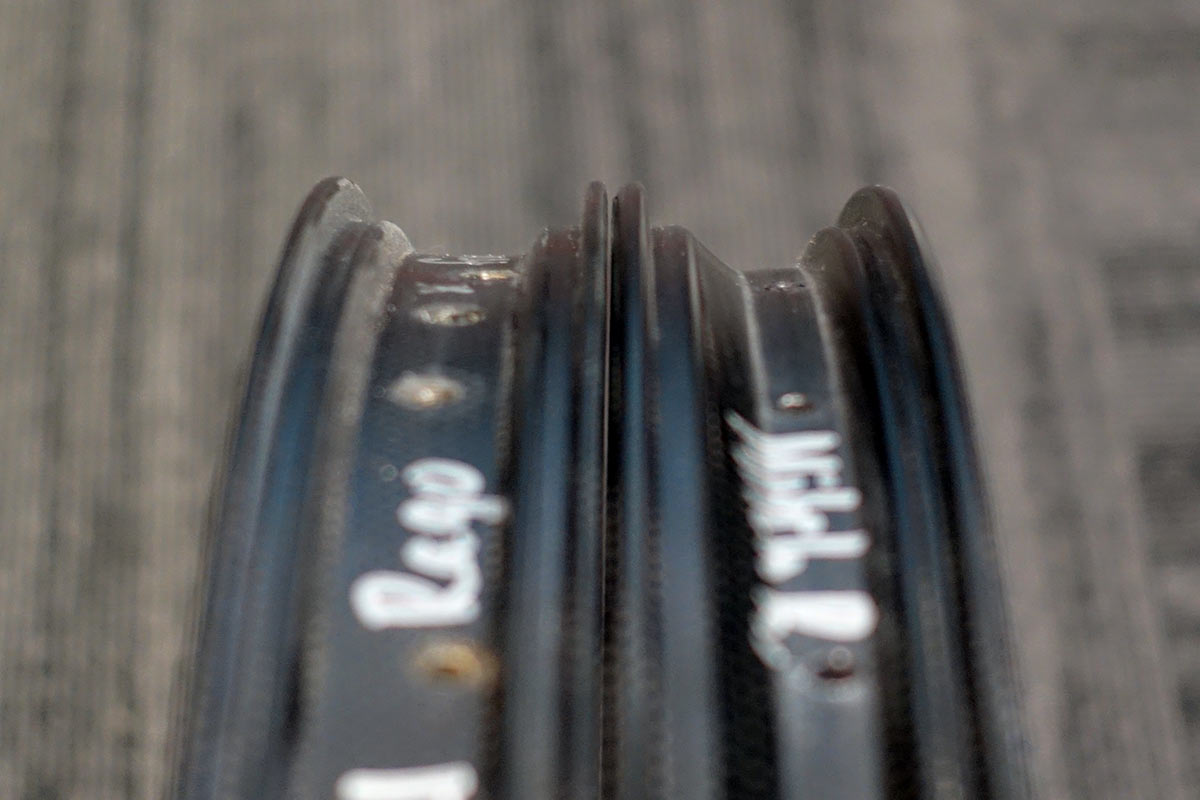
The 3Zero Moto wheels were in development for years before they launched. Why? Because they had to get the ride quality they wanted, and that the athletes wanted, then also make sure it was able to be manufactured. Every time they would make a change to the layup they had to consider not just how it would affect handling, but also the compression. And then the rebound. And then if they had to adjust the rebound, see how that would affect the compression, over and over again in a cycle.
And then they have to take spoke count, bracing angles and hub flanges into account…there are a lot of moving pieces that all dictate how the complete wheel will act.
To test the rims’ impact resistance and engineered flex, they employed a few different machines. Some we can show you, some we can’t. There’s a lot of stuff they don’t want made public, one of which is a tubeless tire sealant dispersement machine that flips and rolls a wheel to evenly spread the sealant throughout the tire. And it’s a trade secret, because it’s important to ensure that sealant is evenly spread inside if you’re relying on tire pressure to measure other things. But the fact that they made a machine that likely cost (tens of?) thousands of dollars to do what you and I do by spinning and moving a wheel in our hands speaks to the level of OCD around getting it right.
Shown above, this sled rolls a slower off-axis impact test with higher mass, which allows for more control over the energy put into the rim. Yeah, it’s a controlled environment, but here’s the tricky part: They can strap sensors to every part of the bike and wheel, but what do they measure for enduro? Every course, root and rock is different? And in the real world, you have different tires, tire pressure, suspension, rider weights, and so many other variables.
So what did they do?
They measured some of the biggest impacts and how their and their competitors’ rims managed those loads, then made theirs better able to handle those impacts. They had to test against the competition for two reasons: First, because they wanted to make sure theirs would be better. Second, because these are their first real MTB wheels, so they didn’t have any legacy products to test against. With Zipp’s road wheels, they have benchmarks against which they can test, so they can quickly tell if a new design in headed in the right direction.
Other tests include torsional windup, side loading, radial compression fatigue, temperature (making sure they’ll remain in shape if it’s left in a car in the desert in the summer), inflation (up to 120psi before the tire just blows off, the rim doesn’t break),
Everything has to be consistent, so they use the same tire make and model. And spread the sealant evenly. And we weren’t allowed to take photos of that machine. But it’s mesmerizing.
Cutting and laying carbon
After all of the testing led to finalized shape and layup, it was time to start manufacturing en masse. All of the 3Zero Moto rims are made in Indianapolis, and it all starts with big sheets of custom formulated pre-preg carbon fiber. Those go on this plotting table to be cut into shape. Cut pieces go into bins called the “supermarket” where workers pick what they need to build a particular wheel. Each rim can be traced to its kit, then the carbon roll(s), to the carbon supplier. This helps them easily quarantine a batch of wheels if they find one with problems to make sure it’s not an issue with the raw material.
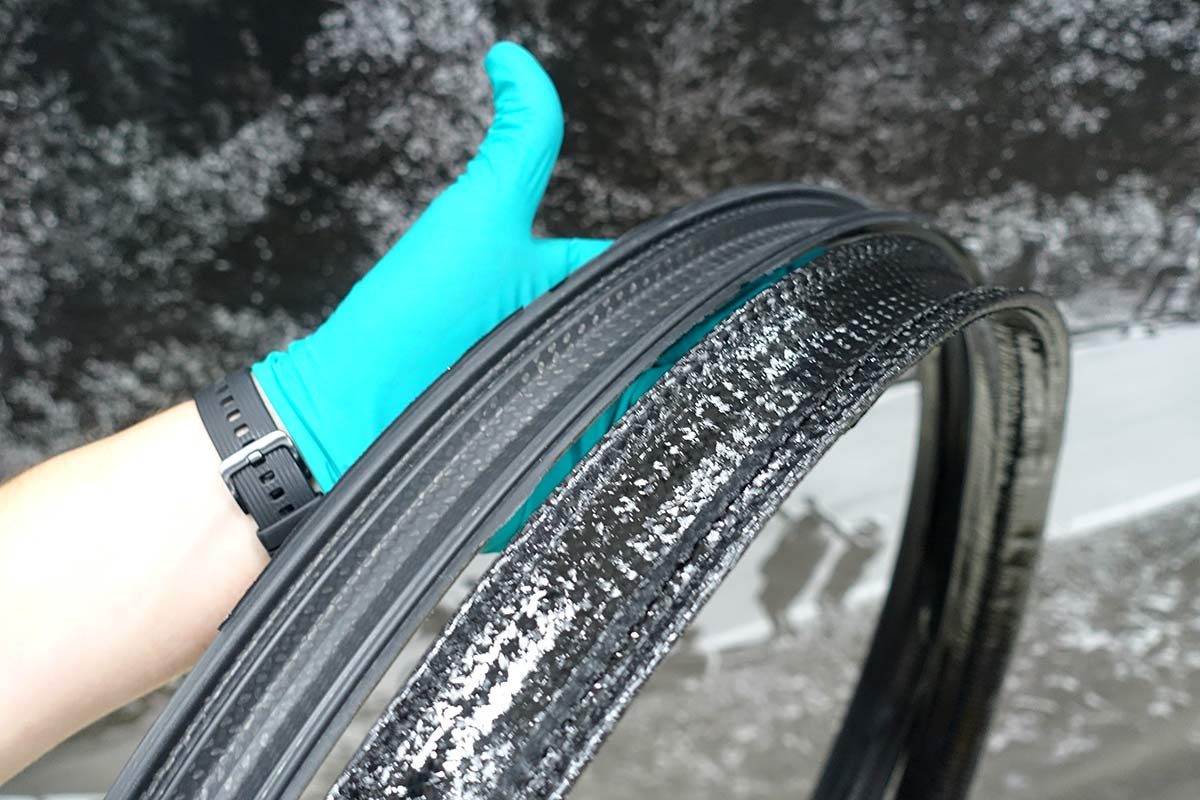
The molds sandwich the rim with the edges on the outer sidewall surface. This puts the split line is on the sides so there are no cut fiber ends in the main impact area of the rim’s bead. And it won’t damage fibers when they machine & sand off the flashing.

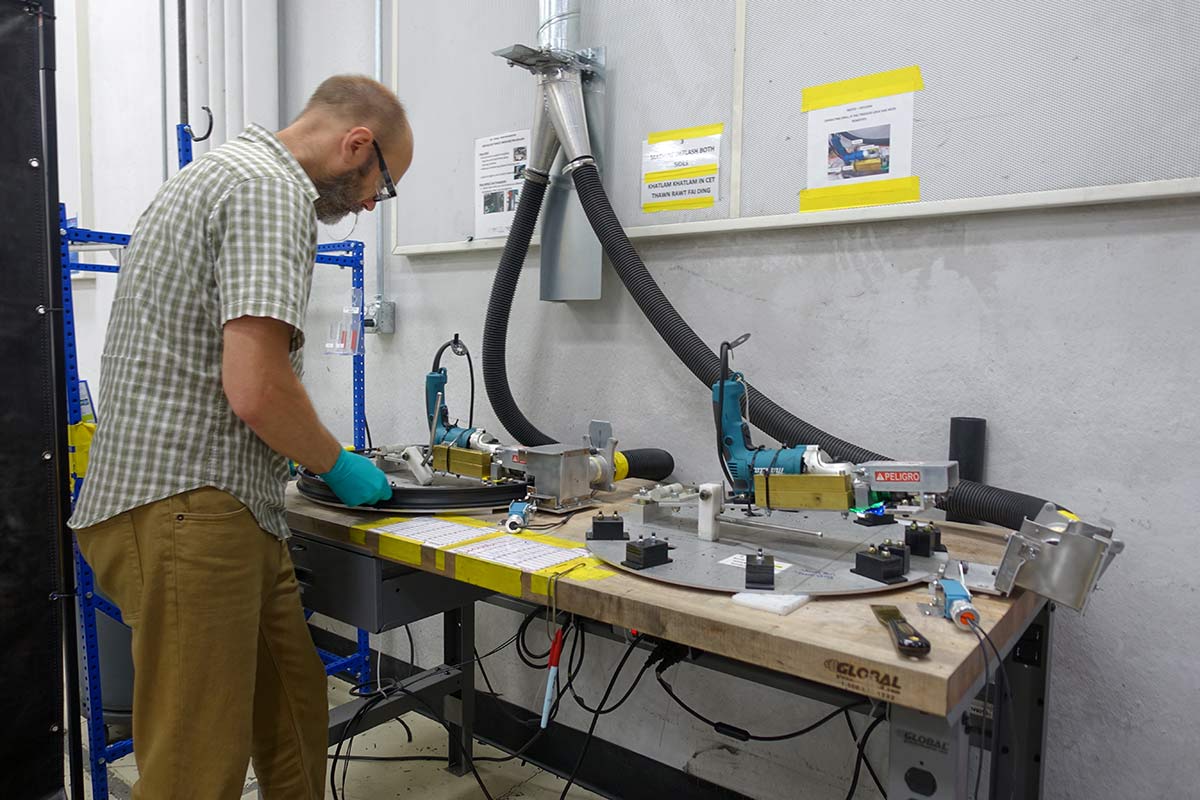
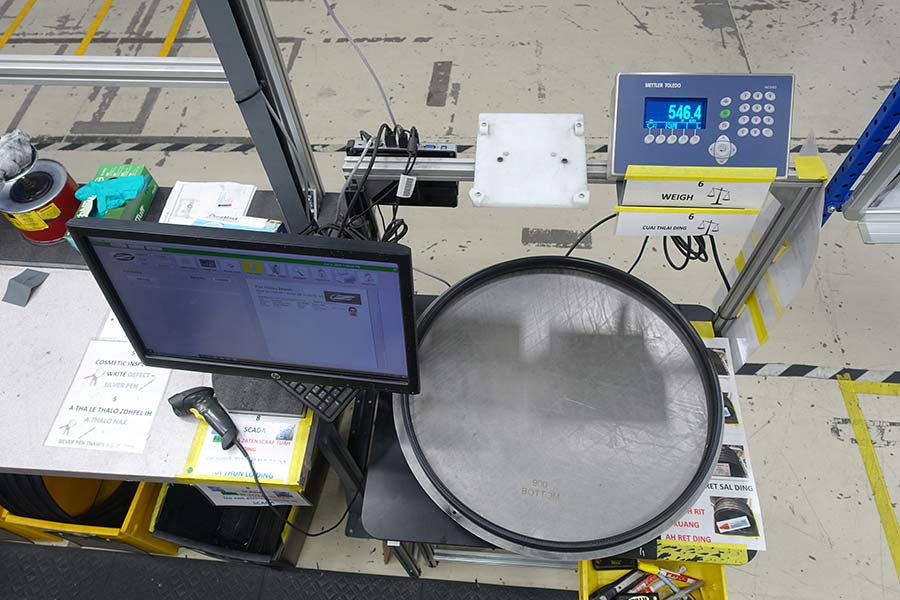
Once rims are done, they’re stored in another “supermarket” where they can pull them and drill as needed to build them based on actual orders.
Building and unbuilding the wheels
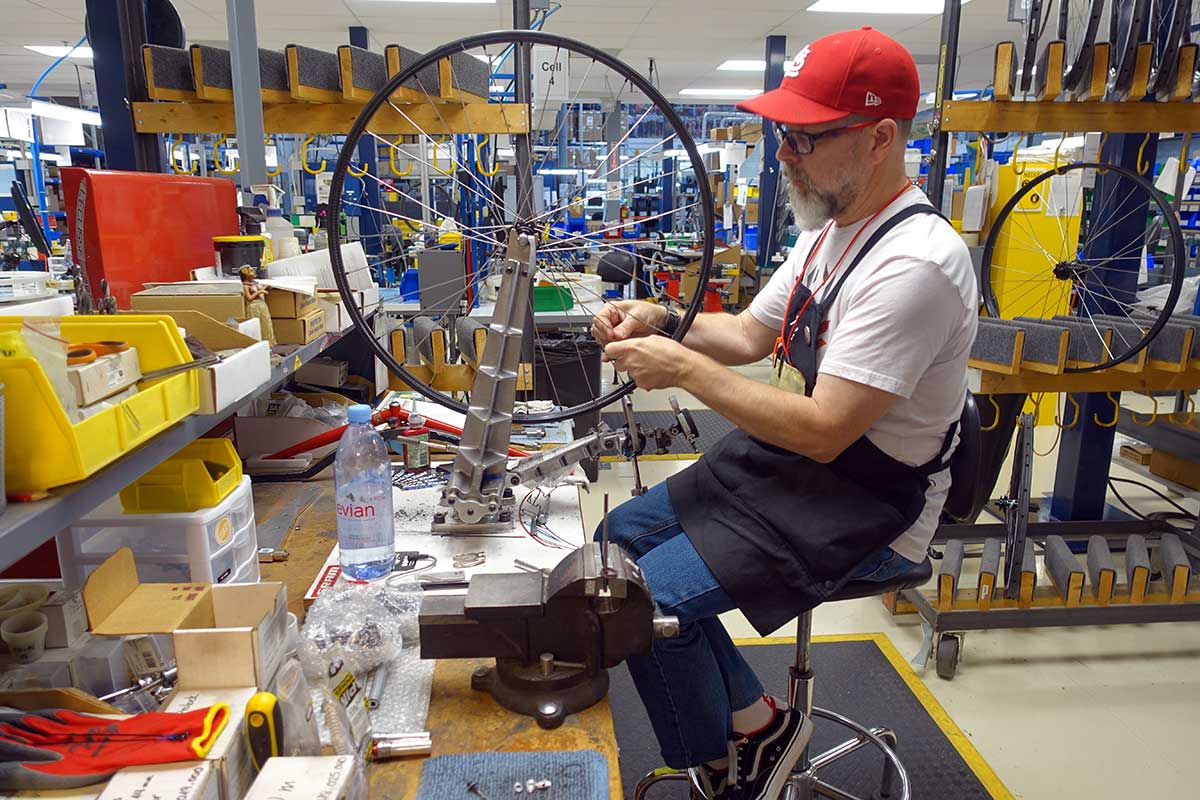
The rim is so different than a standard box section road rim that there are only three people inside Zipp certified to build them into wheels. With a typical rim, you’re moving the hub inside the rim as you true it. With this one, because it has engineered flex, it has to be built in a specific way, equally tensioning the spokes a little at a time, all the way around, or it just pulls funny. But don’t worry, they can be trued just like a normal wheel, so it’s something your local shop can do.
Every Zipp wheel, road and mountain, is built here or in their Portugal center. They’ll ship the rims there, hubs come from Germany, and spokes from Belgium, so it makes more sense for European wheels to be assembled there.
They use custom detensioners called the Smasher that helps seat the spokes before they’re fully tensioned, helping ensure everything is equally seated and placed for a better wheel build.
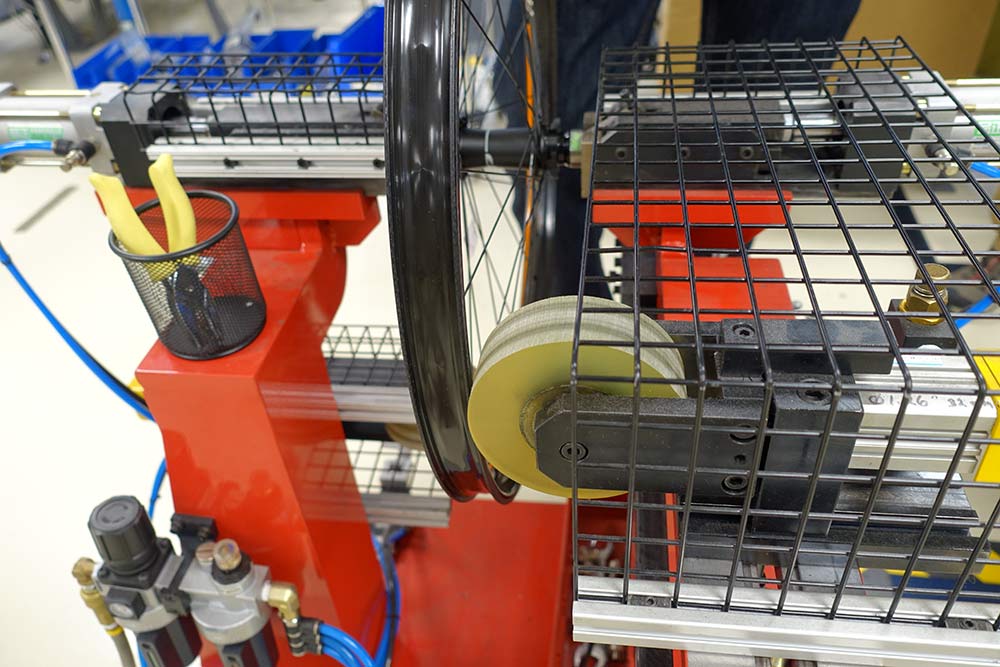

Nic James (top photo this section) builds all of the wheels for their sponsored riders. He would also un-build them after testing to see how things like the spokes, spoke holes, nipples and hubs would wear, which added insight into how and why the wheels performed the way they did.
Once built and inspected, they’re boxed and ready to ship.
Cool. So what happens there?
Lots, actually. They make all of their rims here. As in, all of them. And everything for the North American market is built here, with their Portugal plant assembling road, cyclocross, gravel and triathlon wheels for the European market.
The warehouse section is fairly large, holding all the small parts necessary to build the wheels, ship service and warranty parts, and support some of SRAM’s other divisions.
Many of their highest end rims use printed logos, which are lighter and more aerodynamic than decals (pronounced “deck-uls” around these parts). Their sponsored pros and show bikes sometimes get custom printed designs for major events. During our visit they were running a color test, but that’s another machine they didn’t want shown publicly.
We spotted a few other cool things around the office, like this partial rim used as an air hose holder…
…and these custom machined door hangers shaped like a Zipp rim cross section.
Huge thanks to Zipp for flying us up and showing us around the factory and Indy. Stay tuned for your chance to ask Zipp anything you want about carbon fiber mountain bike rims!
